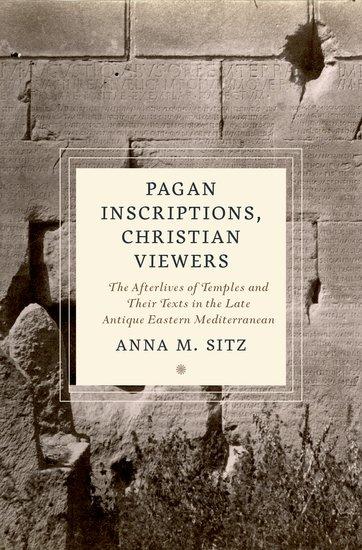
Zustellung: Mi, 09.07. - Mo, 14.07.
Versand in 2 Wochen
VersandkostenfreiBestellen & in Filiale abholen:
Pagan Inscriptions, Christian Viewers provides a fresh perspective on the Christianization of the Roman empire from the fourth to the seventh century CE by analyzing a previously overlooked body of evidence: the many ancient, pagan inscriptions, written in Greek or other languages, which were reused, preserved, or even partially erased in this period.
Inhaltsverzeichnis
- Chapter 1. Introduction: Afterlives of Inscriptions
- Epigraphic Reincarnation at Megara
- Manufactured Violence
- Inscribed Sanctuaries
- Literacy in Late Antiquity
- Chapter Outline
- The Fine Print
- Chapter 2. The Use of Real or Imagined Inscriptions in Late Antique Literature
- The "Arch of Alexander" and the Ends of the Earth
- Writing the Past from Inscriptions
- Prophesying from Stone: Invented Oracles
- Plagiarizing for the Saints: The Life of Abercius
- Conclusion: The Literary Afterlives of Ancient Inscriptions
- Chapter 3. Preservation: Tolerating Temples and Their Texts
- Touring Temples
- Inscribed Text and Figural Imagery at Unconverted Temples
- Secular or Sacred? Imperial Documents on Temples of Uncertain Use
- Priests, Talking Columns, and Unreadable Texts at Christianized Temples
- Conclusion: Kings of the Past on Display
- Chapter 4. Spoliation: Integrating and Scrambling tions-Inscrip
- (T)reading the Past: Epigraphic Spolia Underfoot
- Constructing Churches with Inscribed Text
- Epigraphic Spolia Elsewhere
- Conclusion: Mixed Re-Views of Old Texts in New Buildings
- Chapter 5. Erasure: [[Damnatio Memoriae]] or Conscious Uncoupling?
- Unnaming the Gods
- Violence Against Statues
- Violence Against Inscriptions
- Selective Erasures
- Indiscriminate Erasure and Destruction
- Conclusion: Epigraphic Unnamings and a Fresh Start
- Chapter 6. Conclusion: Unepigraphic Readings
- Reading at the Temple of Augustus in Ankara Once More
- An Archaeology of Reading
- Spolia: Breaking the Monolith
- Word and Image: Inscriptions and Statues
- Land, Men, and Gods
- Epigraphy: A New Direction
- Bibliography
Produktdetails
Erscheinungsdatum
17. März 2023
Sprache
englisch
Seitenanzahl
352
Autor/Autorin
Anna M Sitz
Verlag/Hersteller
Produktart
gebunden
Gewicht
628 g
Größe (L/B/H)
236/156/25 mm
ISBN
9780197666432
Entdecken Sie mehr
Bewertungen
0 Bewertungen
Es wurden noch keine Bewertungen abgegeben. Schreiben Sie die erste Bewertung zu "Pagan Inscriptions, Christian Viewers" und helfen Sie damit anderen bei der Kaufentscheidung.









